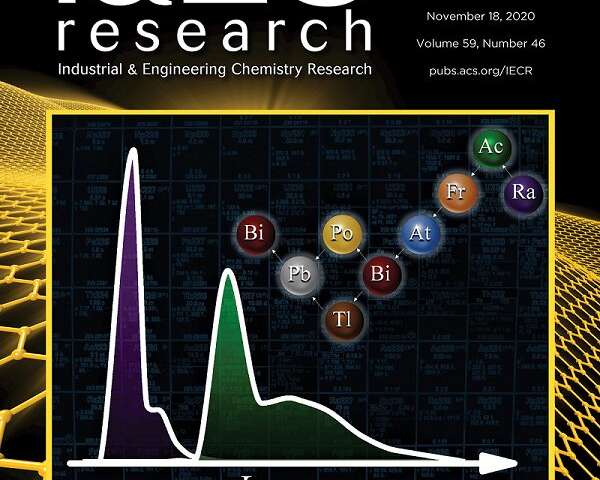Scientists develop inorganic resins for generating and purifying radium and actinium

Research advances the chemistry and improves the purity of isotopes for targeted alpha therapy used in the treatment of cancers.
Targeted alpha therapy can destroy cancerous cells without harming healthy cells. It's especially useful for treating metastasized cancers. The Department of Energy(DOE) Office of Science's Isotope Program is developing and marketing novel radioactive isotopes for targeted alpha therapy. One method of making one isotope, actinium-225, involves bombarding radium targets with neutrons. This method poses a challenge: how to chemically separate the radium from the actinium. This can destroy typical separation equipment due to a radioactive process called alpha decay. Now, researchers have investigated the use of radiation-resistant inorganic resin scaffolds as platforms for separating radium, actinium, and lead.
Demand and production of actinium-225 (Ac-225) and other alpha-emitting radioisotopes are increasing. These new types of resins will support the purification and distribution of these lifesaving isotopes. As production increases, radiation levels will also increase. Chemical processes need to be robust in these hazardous environments. These new resins and this recent research will help producers save time, effort, and costs while reducing the risks of manufacturing alpha-emitting radioisotopes.
This research by scientists at Argonne National Laboratory explored new materials that could support and facilitate the efficient separation of radium and actinium in the context of the large-scale production of radioisotopes used in targeted alpha therapy. While these radioisotopes have the potential to produce powerful results in the treatment of cancers, scaling up production to meet the high demand of these radioisotopes comes with increasing radiation levels. This creates new sets of challenges, particularly radiation damage to process equipment.
The researchers explored this new class of radiation-resistant materials with respect to the fundamental radiochemical separations of radium, actinium, and lead. Through rigorous screening based on separation efficiency and chemical durability, they ultimately determined that zirconium-based materials are the optimal platform. The results demonstrated good separation capabilities of radium from actinium along with remarkable radiopurities using relatively simple chemicals. These efforts advance the DOE Isotope Program and its mission to conduct research and development on new and improved isotope production and processing for high-priority, cancer-fighting radioisotopes.
More information:
M. Alex Brown, Separation of radium and actinium using zirconia, Applied Radiation and Isotopes (2022). DOI: 10.1016/j.apradiso.2022.110238
M. Alex Brown, Metal Oxide Sorbents for the Separation of Radium and Actinium, Industrial & Engineering Chemistry Research (2020). DOI: 10.1021/acs.iecr.0c04084
Provided by Argonne National Laboratory